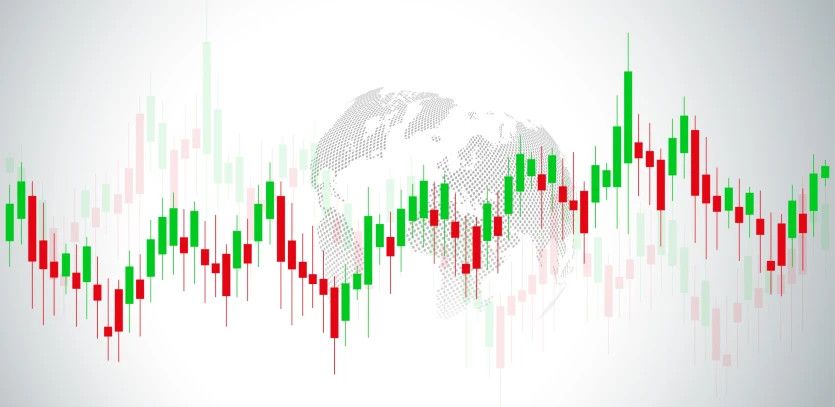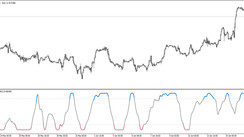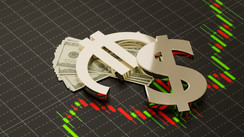The use of leverage , access to global markets, and the ability to trade long (buy) and short (sell falling markets), positions the CFD market as a top contender across the financial space.
Contract for differences, or CFDs , are leveraged trading products that mirror the price of underlying markets. CFDs represent an agreement, or contract, between buyers and sellers to exchange the difference between the opening and closing price.
CFDs are there to speculate on the future direction of a market’s price movements, without taking ownership of the underlying asset. CFD hedging is also a popular strategy to offset potential losses. Most CFD trades also have no fixed expiration date and are settled in cash.
Brief History
According to research, CFDs were invented in the early 1990s by Smith New Court, a derivative brokerage firm based in London, developed to cost-effectively hedge exposure using leverage.
This gave birth to rapid expansion in the CFD market. In Australia, CFDs were not launched until 2002, when IG Markets opened their doors, followed closely by CMC Markets.
In addition to this, traders in the UK are able to avoid UK stamp duty as CFDs base positions on agreements.
Trade CFDs Like a Pro
Market Selection:
The first step for any professional trader is market selection. A major benefit of trading CFDs is having access to several markets.
FP Markets offers traders instant exposure to a number of key CFD instruments, including foreign exchange (think the Forex market – currency pairs), Indices (index CFDs), Commodities (commodity CFDs include crude oil and gold), Stocks (Apple, for example) and Cryptocurrencies (think bitcoin and ethereum).
Market selection is key in any trading strategy. Professional CFD traders, however, seldom engage with all financial markets. They tend to select one or two key instruments that suit their trading approach, Forex trading, and a stock index, as an example.
Analysis:
Determining if a market is positioned favourably is typically founded on the back of two common trading approaches: fundamental and technical analysis.
Fundamental analysis tends to answer the question of why a trade is likely to move in the desired direction, whereas technical analysis generally answers the question as to when a trade should be executed.
New traders working with a demo account may find FP Market’s Traders Hub helpful, offering daily technical and fundamental analysis from industry experts.
Professional CFD traders not only understand their analysis but also recognise the operation behind buying and selling any financial instrument.
In brief, the bid is the value traders can sell, while the ask (sometimes referred to as the offer) is the buy price. The difference between the two is known as the bid/ask spread.
CFD brokers (or CFD providers) operating as a market maker, broker routing orders through a dealing desk, essentially make the market. They determine the spread in this case and ultimately earn revenue through this mechanism – which can be fixed (though are subject to change).
Position Size:
To start trading CFDs a margin account is necessary.
Initial margin is used as collateral to open and maintain a leveraged position. In other words, you place a deposit upfront. Margin requirements vary from broker to broker.
When most think about trading, it’s believed large sums of capital are needed in order to open a trading account. This may be the case for some investments; CFDs, however, offer more of a convenient path due to the use of leverage.
Leverage, or sometimes referred to as ‘gearing’, essentially increases your buying power and risk of loss.
However, leverage is not a ‘loan’ from your broker, despite many claiming so as CFDs work in agreements. The CFD contract size can be found in the ‘contract specification’ tab within Market Watch located in the MetaTrader 4 (or 5) trading platform.
Position sizing is important. It is one of the key components of successful trading. Professional traders understand once the psychology of trading is in check, as well as having a sound strategy for selecting entry and exit points, the final factor is position sizing (part of risk management).
Trade Management:
Professional CFD traders appreciate the significance of trade management. A winning trade can swiftly turn into a loser if managed incorrectly.
Some traders opt for a simple ‘set and forget’ strategy. This works well for those who prefer a ‘hands-off’ approach. As its name implies, traders configure the trading parameters prior to trade execution. This tends to help lessen the emotional impact of trading.
Other traders opt for more of a manual approach, with some preferring to average in and out of positions based on price action. There’s also the aspect of when to reduce risk to breakeven and whether using manual trailing stop-loss orders is optimal.
The idea of trade management is to get the most out of each trade while adopting strict risk and money management rules.
Professional Approach
All successful CFD traders, whether day trading or swing trading, have a trading plan, a comprehensive blueprint detailing each step of their trading activity.
It is in place to decide what, when, and how much to trade.
Among other things, a trading plan contains trading strategies (not only does this help define market direction it should also state trading style: a swing trader, a scalper, a day trader or a position trader), risk, and money-management rules, trading goals and a trading journal.
Trading is a never-ending learning process.
Consistently successful traders embrace this concept by continually growing their skillset.
About the Author
FPMarkets
FP Markets combines ECN pricing and award-winning execution speed with institutional-grade liquidity to provide traders consistently tighter spreads and unparalleled trading conditions. Start trading with FPMarkets now!
The information contained in this material is intended for general advice only. It does not take into account your investment objectives, financial situation or particular needs. FP Markets has made every effort to ensure the accuracy of the information as at the date of publication. FP Markets does not give any warranty or representation as to the material. Examples included in this material are for illustrative purposes only. To the extent permitted by law, FP Markets and its employees shall not be liable for any loss or damage arising in any way (including by way of negligence) from or in connection with any information provided in or omitted from this material. Features of the FP Markets products including applicable fees and charges are outlined in the Product Disclosure Statements available from FP Markets website, www.fpmarkets.com and should be considered before deciding to deal in those products. Derivatives can be risky; losses can exceed your initial payment. FP Markets recommends that you seek independent advice. First Prudential Markets Pty Ltd trading as FP Markets ABN 16 112 600 281, Australian Financial Services License Number 286354.





